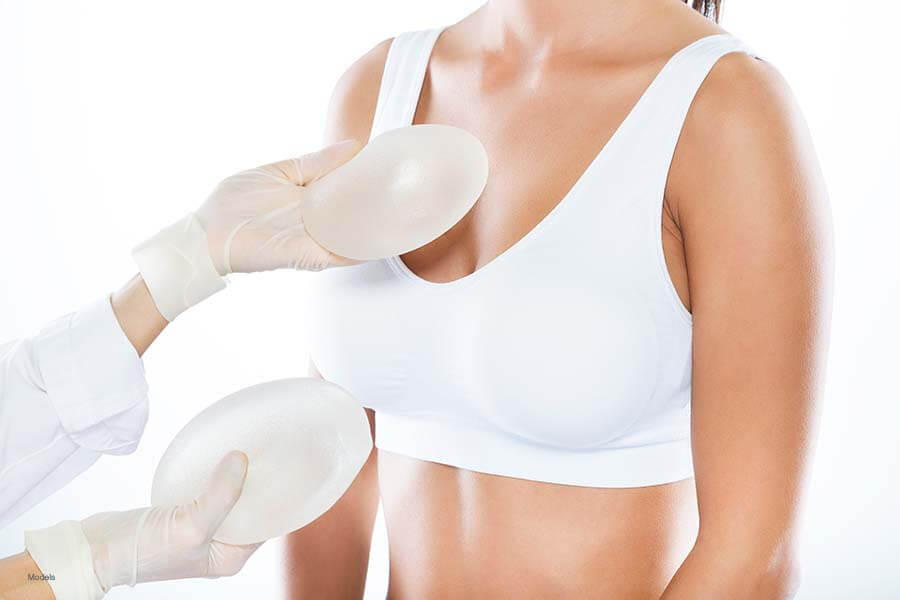Breast augmentation is a cosmetic surgery procedure designed to enhance the size and shape of a woman’s breasts.

While the decision to undergo breast augmentation is deeply personal, it’s essential to know one factor that can significantly affect the recovery process is the size of the breast implants chosen.
All About Breast Implant Sizes
Breast implant sizes are measured in cubic centimeters (cc) and are available in a wide range, typically from 100cc to 800cc or more. The choice of implant size depends on your aesthetic goals, body type, and the plastic surgeon’s recommendations. Implants can be categorized as small, moderate, or large, and each size uniquely impacts the recovery process.
Minimal Breast Implants (100–300cc)
Smaller implants, which generally result in a bra cup size in the B range, are typically chosen by patients looking for a subtle enhancement. They are often associated with a shorter recovery period due to the minimal stretching of the breast tissue.
Moderate Breast Implants (300–500cc)
Moderate-sized implants, which often provide a bra cup size of C to D, usually result in a noticeable but not overly dramatic increase in breast size. Recovery time for these implants is typically a midrange period, with some discomfort and swelling.
Large Breast Implants (500cc+)
Larger implants, which result in a bra cup size of DD and above, are usually selected by individuals seeking a significant increase in breast size. The recovery period for large implants can be longer and more uncomfortable due to the increased stretching of breast tissue.
How Breast Implant Size Affects Recovery Time
Breast implant size can directly impact the recovery time after breast augmentation.
- Swelling and discomfort: Larger implants tend to stretch the breast tissue more, leading to increased swelling and discomfort during the initial recovery phase. Patients with large implants may experience more pain and tightness.
- Range of motion: Larger implants can temporarily limit the range of motion in the arms and chest, affecting daily activities and requiring an extended adjustment period.
- Physical activity: Patients with larger implants may need to restrict strenuous physical activity for a longer period to avoid complications or discomfort.
- Support garments: Patients with larger implants may need to wear support garments for an extended time to ensure optimal healing and prevent complications like implant displacement.
- Returning to normalcy: While recovery time is subjective, patients with smaller implants often return to their regular daily routines more quickly than those with larger implants.
What Else Impacts Breast Augmentation Recovery Time?
Several factors contribute to the recovery time after breast augmentation, and the choice of implant size is just one of them. Here are some key factors that can influence your healing process:
- Breast implant incision types: The surgical technique used can affect recovery. Transaxillary (through the armpit), inframammary (beneath the breast), and periareolar (around the areola) incisions all have varying recovery times.
- Breast implant placement: Implants can be placed either under the breast tissue and above the chest muscle (subglandular) or below the pectoralis major muscle (submuscular). Submuscular placement often results in a longer recovery due to muscle involvement.
- Individual healing: Every individual’s body heals at its own pace. Genetics, age, overall health, and lifestyle factors can influence how quickly you recover.
- Post-operative care: Following your plastic surgeon’s post-operative instructions carefully, including proper wound care and wearing support garments as directed, can impact the speed and quality of your recovery.
Breast Augmentation Recovery Tips
Regardless of implant size, the following tips can help optimize your breast augmentation recovery:
- Follow post-op instructions: Adhering to your surgeon’s post-operative instructions is crucial. This includes taking prescribed medications, avoiding strenuous activities, and attending all follow-up appointments.
- Manage pain and swelling: Pain and swelling are common after surgery. Over-the-counter pain relievers and cold compresses can help manage discomfort and reduce swelling.
- Proper rest: Rest is essential for your body to heal. Ensure you get adequate sleep and take short breaks during the day.
- Balanced diet: A nutritious diet can promote healing. Focus on foods rich in vitamins and minerals that support the body’s recovery process.
- Stay hydrated: Staying hydrated by drinking plenty of water aids in the healing process.
- Wear support garments: Supportive bras or compression garments can help reduce swelling and provide comfort, especially in the initial stages of recovery.
- Physical therapy: Some patients with larger implants can benefit from physical therapy exercises as prescribed by a healthcare professional to regain strength and mobility.
The size of breast implants chosen for augmentation can influence the recovery time and overall experience. While smaller implants usually result in a shorter and more comfortable recovery period, larger breast implants may require more time and patience for the body to adjust.
Ultimately, the decision on implant size should be reached after consultation with a board-certified plastic surgeon like Dr. O’Toole. Your surgeon can provide guidance based on your cosmetic goals, body type, and desired results.
Remember that proper post-operative care and patience are crucial to achieving the best outcome and ensuring a more positive recovery, regardless of implant size.
A Wide Range of Breast Implant Options in Pasadena, CA
Dr. Martin and Dr. Adam O’Toole provide many options for their breast augmentation patients in Pasadena, California. If you are considering breast enhancement surgery near Los Angeles or the San Fernando Valley, call our office at (626) 671-1756 today!




